A uniform horizontal rod of length 40 cm and mass 1.2 kg is supported by two identical wires as shown in figure. Where should a mass of 4.8 kg be placed on the rod so that the same tuning fork may excite the wire on left into its fundamental vibrations and that on right into its first overtone ? Take g=10ms−2
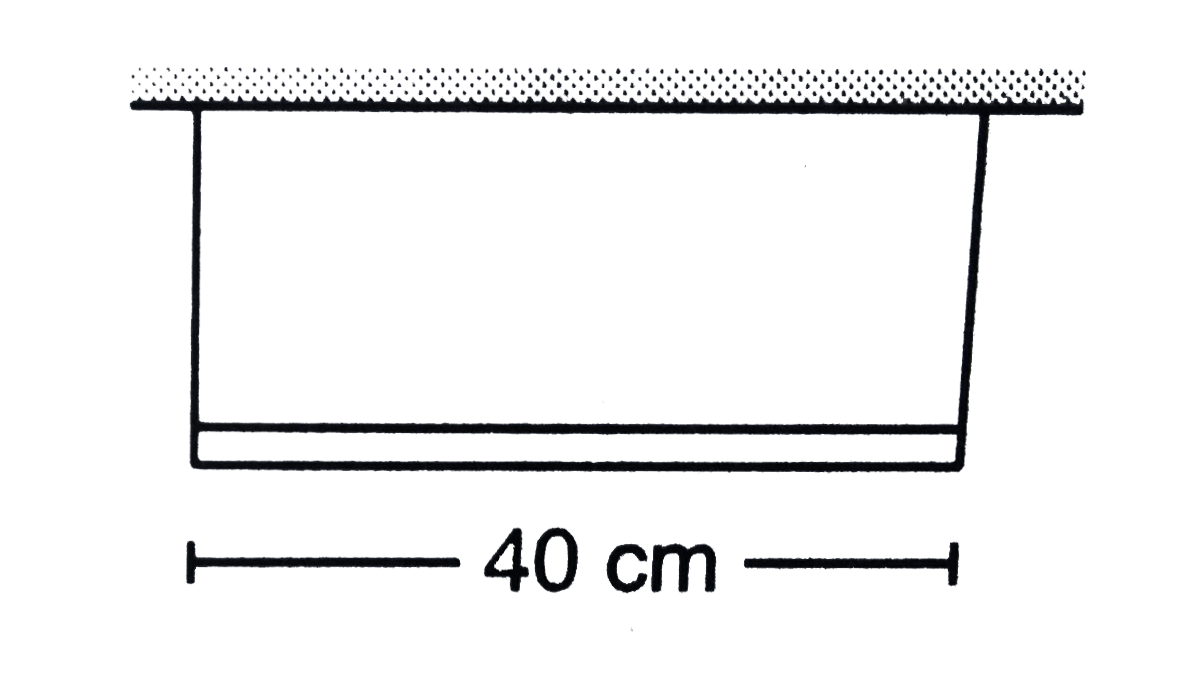
The correct Answer is:5
Step by step video solution for A uniform horizontal rod of length 40 cm and mass 1.2 kg is supported by two identical wires as shown in figure. Where should a mass of 4.8 kg be placed on the rod so that the same tuning fork may excite the wire on left into its fundamental vibrations and that on right into its first overtone ? Take g=10ms^-2 by Physics experts to help you in doubts & scoring excellent marks in Class 12 exams.
Updated on:21/07/2023Topper's Solved these Questions
- WAVE ON STRING Book:RESONANCE ENGLISHChapter:WAVE ON STRING Exercise:Exercise- 2 PART III
Explore 15 Videos
- WAVE ON STRING Book:RESONANCE ENGLISHChapter:WAVE ON STRING Exercise:Exercise- 2 PART IV
Explore 9 Videos
- WAVE ON STRING Book:RESONANCE ENGLISHChapter:WAVE ON STRING Exercise:Exercise- 2 PART I
Explore 21 Videos
- TRAVELLING WAVESBook:RESONANCE ENGLISHChapter:TRAVELLING WAVESExercise:Exercise- 3 PART II
Explore 7 Videos
- WAVE OPTICSBook:RESONANCE ENGLISHChapter:WAVE OPTICSExercise:Advanced Level Problems
Explore 7 Videos
Similar Questions
The plane wave represented by an eqution of the form y = f(x-vt) implies the propagation along the positive x-axis without chang of shape with constant velocity v. Then
View SolutionA pulse is started at a time t=0 along the +x directions an a long, taut string. The shaot of the puise at t=0 is given by funcation y with
y=⎧⎪ ⎪⎨⎪ ⎪⎩x4+1for−4<x≤0−x+1for0<x<10 otherwise
here y and x are in centimeters. The linear mass density of the string is 50g/m and it is under a tension of 5N,
the shape of the string is drawn at t=0 and lthe area of the pulse elclosed by the string and the x−string is measured. It will be equal to
View Solutionthe same progressive wave is reprsented by two group I and II. Graoup I shows how the displacement 'y' varies with the distance x along the wave at a given time. Graph II shows how y varies with time t at a given point on the wave. The ratio of measurements AB to CD, marked on the curvse m repersents.
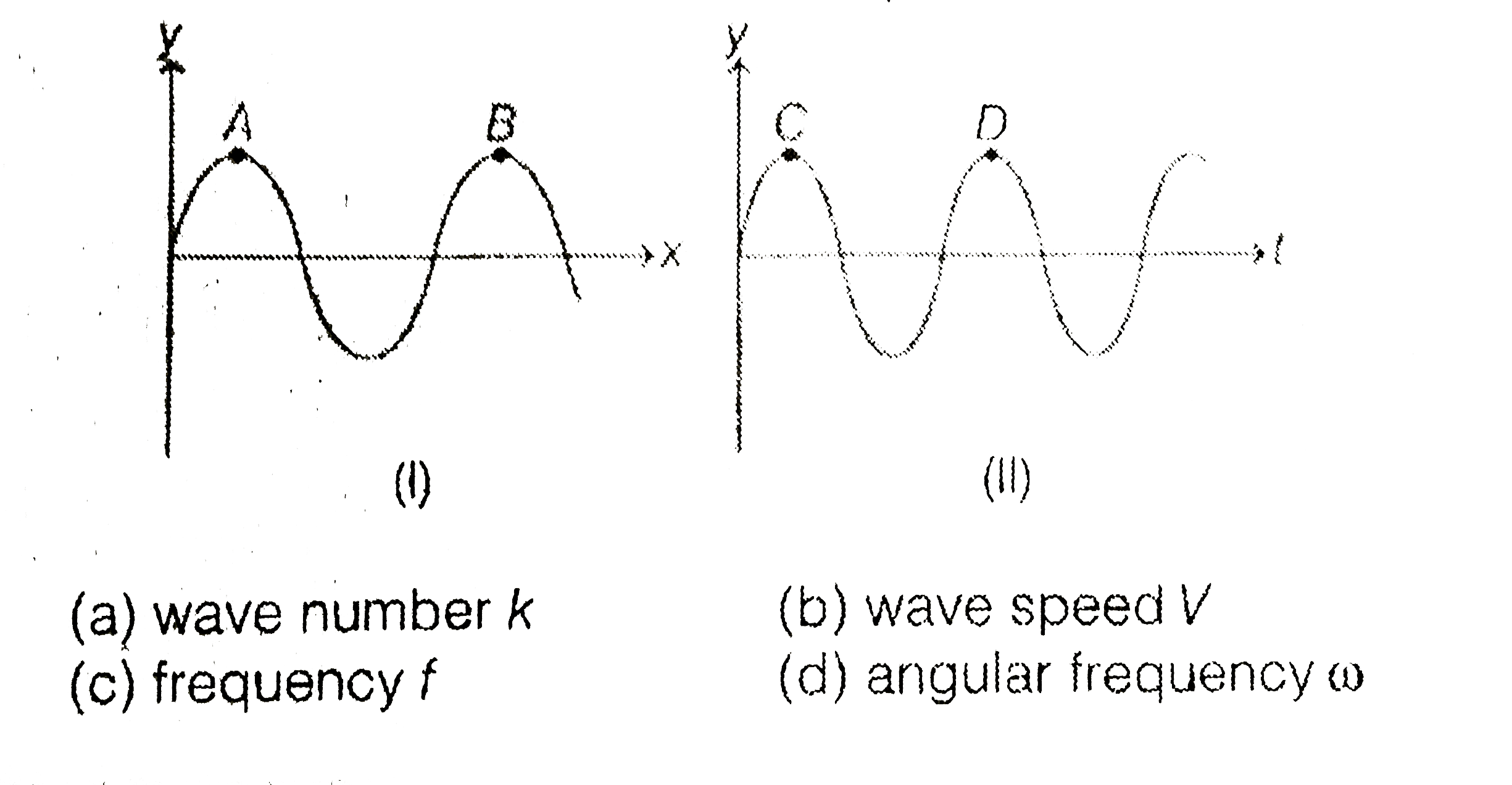
View SolutionA string is stretched betweeb fixed points separated by 75.0cm. It observed to have resonant frequencies of 420Hz and 315Hz. There are no other resonant frequencies between these two. The lowest resonant frequency for this strings is
View SolutionTwo parallel beams of light P and Q are incident normally on a prism and the transmitted rays are brought to focus with the help of a convergent lens as shown in Fig. 2.23. If the intensities of the upper and lower beams immediately after transmission from face AC are 4I and I, respectively, find the resultant intensity at the focus.
View SolutionA uniform horizontal rod of length 40 cm and mass 1.2 kg is supported by two identical wires as shown in figure. Where should a mass of 4.8 kg be placed on the rod so that the same tuning fork may excite the wire on left into its fundamental vibrations and that on right into its first overtone ? Take g=10ms−2

View SolutionA 100 cm long wire of mass 40 g supports a mass of 1.6 kg as shown in figure . Find the fundamental frequency of the portion of the string between the wall and the pulley. Take g=10m/s2.
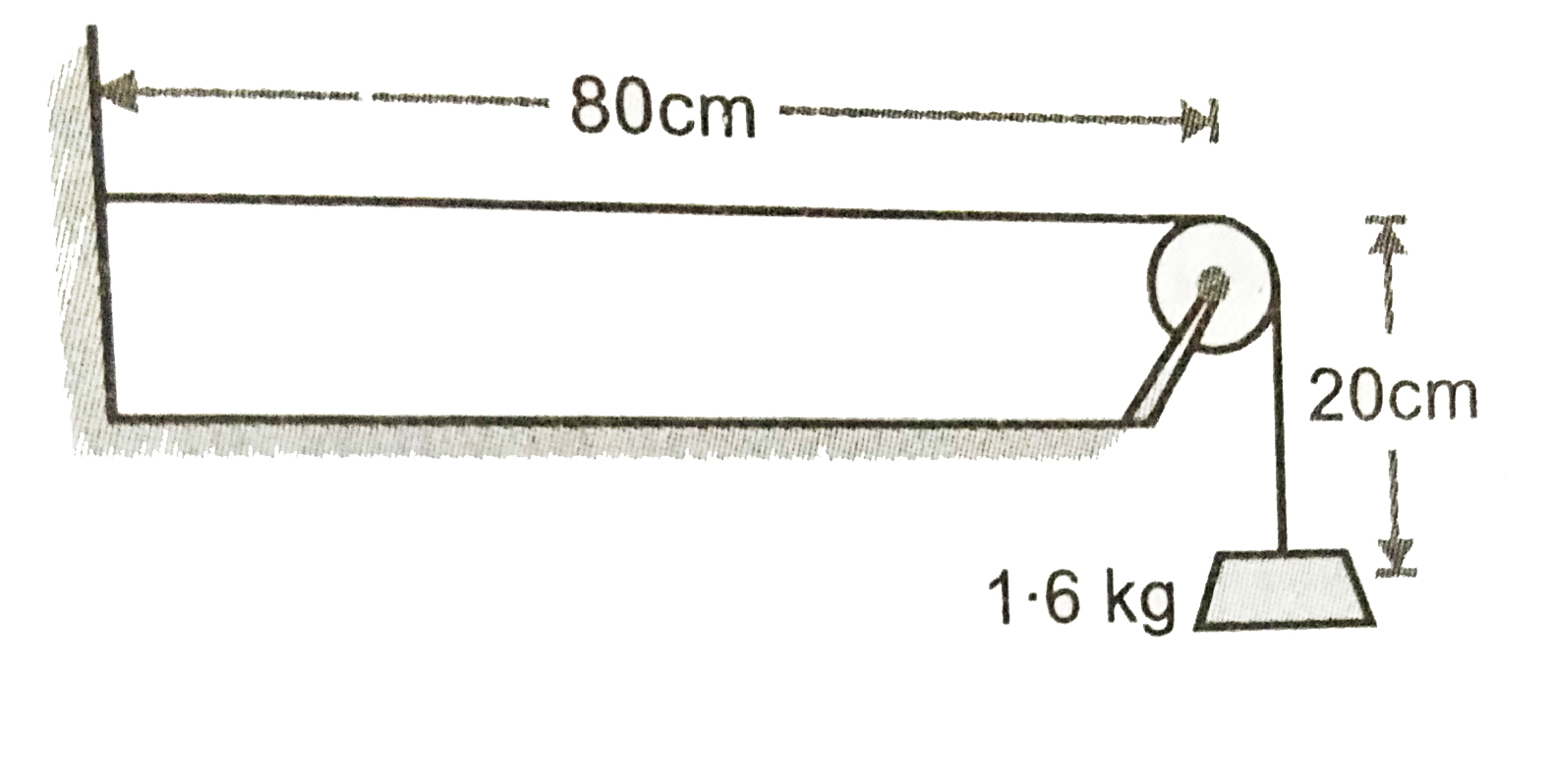
View SolutionA 1 m rod of mass 100 kg is hanging from two in extensible support strings at its ends of equal lengths. If an another mass of 20 kg is placed on rod at a distance 30 cm from the left end, find the tension in the two support strings, if rod remains horizontal. Take g=10m/s2
[560 N, 640 N]
View SolutionA 50cm long wire of mass 20g supports a mass of 1.6kg as shown in figure. Find the first overtone frequency of the portion of the string between the wall and the pulley. Take g=10m/s2
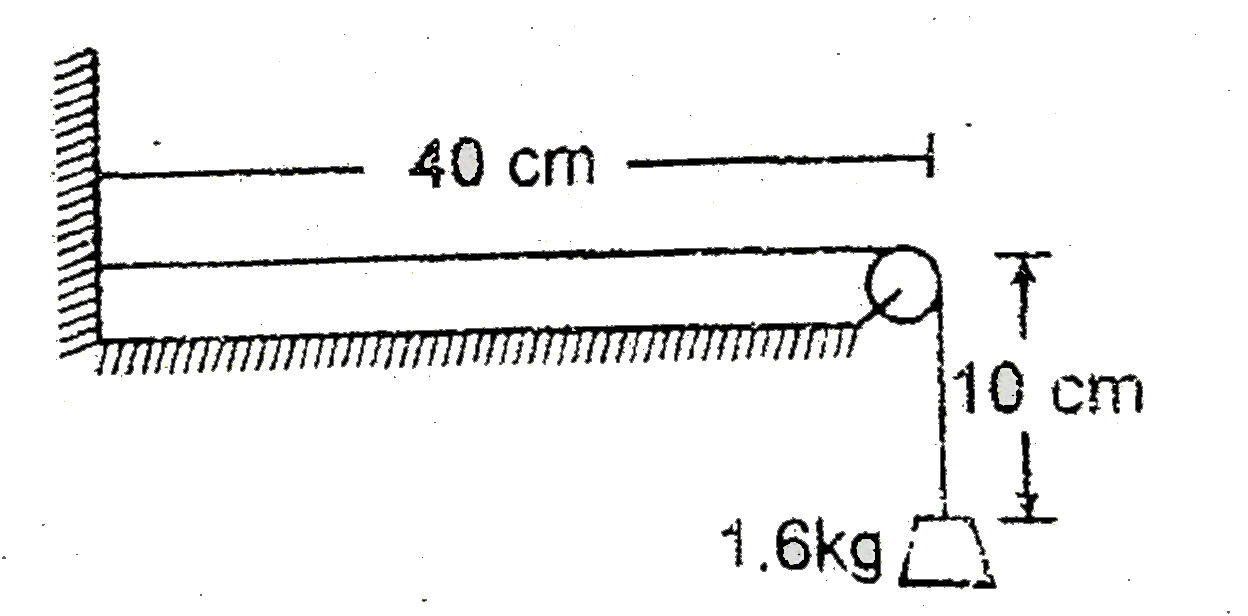
View SolutionA uniform horizontal rod of length 40 cm and mass 1.2 kg is supported by two identical wires as shown in figure. Where should a mass of 4.8 kg be placed on the ord form left end (in cm ) so that the same tuning fork may excite the wire on left into its fundament vibrations and that on right into its first overtone? Take g = 10 m//s^(2) .
View SolutionA wire is under a tension of 32N and length between the two bridges in 1m. If the length of the sample wire is 10m and its mass is 2 g, then the fundamental frequency of the wire will be
View SolutionA sonometer wire vibrating in its fundamental mode, is in unison with a tuning fork when the length of the wire between the bridges is 25 cm. By keeping the same tension , the length between the bridges is increased to 75 cm. The tuning fork can still be in resonance with the vibrating wire , provided the wire vibrates with
View SolutionA rod PQ of length 'L' is hung from two identical wires A and B. A block of mass 'm' is hung at point R of the rod as shown in figure. The value of 'x' so that the fundamental mode in wire A is in resonance with first overtone of B is
View SolutionFrom two identical wires, a rod XY of length l is hung. A wooden block of mass m is hung at point O of the rod at a distance a from wire A. Find the value of a in the case when a tuning fork excites the fundamental note in wire A and third harmonic in wire B.
View SolutionA uniform horizontal rod of length 40 cm and mass 1.2 kg is supported by two identical wires as shown in figure. Where should a mass of 4.8 kg be placed on the rod so that the same tuning fork may excite the wire on left into its fundamental vibrations and that on right into its first overtone ? Take g=10ms−2

View SolutionA rod PQ of length 'L' is hung from two identical wires A and B. A block of mass 'm' is hung at point R of the rod as shown in figure. The value of 'x' so that the fundamental mode in wire A is in resonance with first overtone of B is
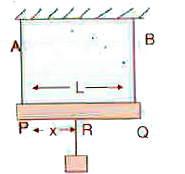
View Solution
